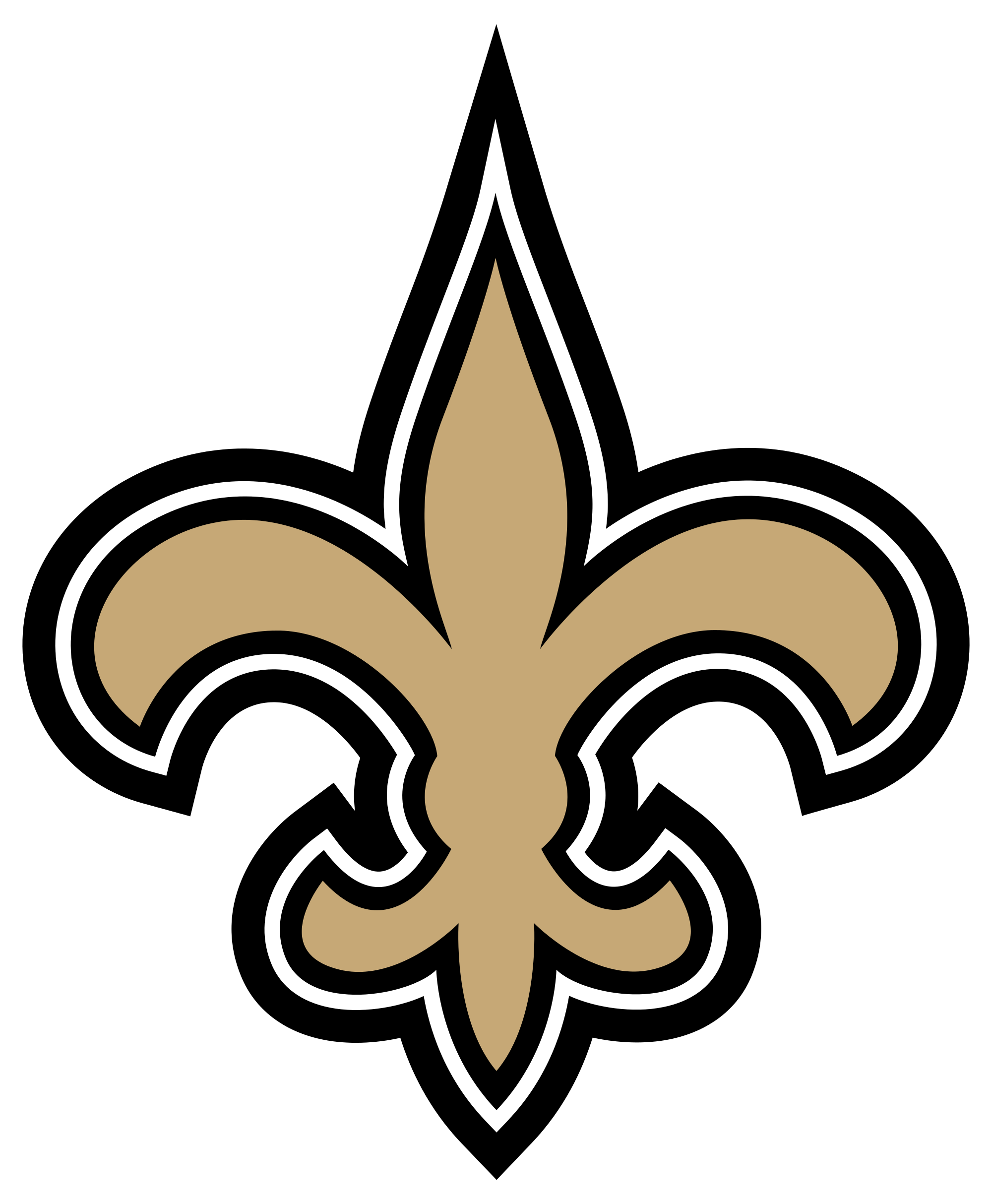Well, that was a fun three days, wasn’t it? It was certainly refreshing to see some developments that will affect the way football is played in the future, rather than how it will be paid for. The 8th US Circuit Court of Appeals told NFL teams and players on Friday that they’re not allowed to talk football, but they can’t tell me not to, so here goes: New Orleans Saints Draft 2011.
As Ian Freed pointed out in his round one analysis, a lot happened for the Saints Thursday night. In fact, in a vacuum (i.e. not considering transactions and other factors), no team instantly improved itself as much as the Saints did Thursday night, besides maybe the Carolina Panthers, and time will tell on that one. The Saints managed to fill their biggest need with a top-15 talent in Cal DE Cameron Jordan without moving up from pick No. 24.
In my previous post, I wrote that if Clemson DE Da’Quan Bowers was available at 24, it would be a dream scenario. Well, Bowers was there, but even in my dream scenario, it was tough to envision Jordan being there at 24. Pretty much every mock draft out there had Jordan going in the 10-14 range. This was a perfect situation for the Saints, solidifying the right DE spot opposite Will Smith with a solid rusher off the edge who can play the run.
Just as Saints fans were getting ready to turn off the television following the Jordan pick, the phone rang in New England, and someone from New Orleans was on the line (or maybe it was the other way around. Either way, the following thing happened). The Saints, who have been publicly unwilling to address Reggie Bush’s massively disproportionate contract, were suddenly drafting again, this time at 28th overall, and were staring down the best RB in the draft in Alabama’s Heisman Trophy winner, Mark Ingram.
We’ll address the Reggie Bush situation once the lockout is over, but for now it’s all about Ingram. Word on the street Thursday night was that the Saints almost took Ingram at 24, but instead opted to fill the need on defense. Luckily for Mickey Loomis, nobody likes trading picks more than Bill Belichick, and there he was at number 28. Voila, Mark Ingram to New Orleans.
As Ian pointed out, Ingram came with a price. The Saints gave up their second round pick (No. 56 overall), and their 2012 first-rounder, which if things go the Saints way, figures to be at the end of the first round. Conventional wisdom doesn’t always advocate giving up a first-rounder for a skill player, but the Saints are obviously determined to win in 2011, and Ingram gives the Saints both talent and security in the running game that weren’t present in 2010. And let’s not forget, some people in Atlanta would probably tell you that it could have been worse.
While the RB by committee has been a good strategy for the Saints the last couple of years, Ingram gives them a do-it-all back that can move the chains late in games. I don’t know Mark Ingram personally, but I imagine that tackling him is similar to tackling a 215 pound bowling ball. The guy is a beast who excels at downhill running and yards after contact.
But enough about the first-rounders. One of the most intriguing pieces of the Saints 2011 draft is Martez Wilson, the third round linebacker from Illinois. This has the look of a pick that could either make this Saints draft look great in a couple of years or cause us to forget about everything that happened after the first round. Wilson was extremely productive at Illinois, but with a caveat: he missed the entire 2009 season after suffering a herniated disk in his neck in the season opener.
The Saints have cashed in on injured players before (see: Drew Brees, Jonathan Vilma), and Wilson seems to have rebounded nicely from the setback, registering 112 tackles in 2010. But the risk here is certainly worth watching. Wilson played inside at Illinois, but with Jonathan Vilma quarterbacking the defense from the MLB position, Wilson looks to move outside in the Saints 4-3 scheme. He is larger than the other Saints LBs, but his pass-rushing skills carried him all the way into the first round in at least one mock draft near draft day. If he becomes a good run defender, the Saints front seven could look really nice in a couple of years with this addition.
The Saints second third round pick, Louisville CB Johnny Patrick, was the first one that some may see as a headscratcher considering the Saints complete secondary, but the middle rounds of the draft are for establishing depth, and the Saints hope to continue to solidify one of the strongest spots on their roster with Patrick. He grades highly in terms of measurables and ball skills, but there may be some concerns with injuries and work ethic. He registered 5 interceptions in 2010, so there is definitely potential here. It will probably be awhile, if ever, before Patrick starts, but hopefully he can come in and contribute in nickel packages.
The Saints had two picks in the seventh round as well, and while seventh round picks are always long shots, the Saints haven’t forgotten 2006 seventh-rounder Marques Colston. The first of the two picks was used on Greg Romeus, an undersized DE from Pittsburgh. The second was spent on Nathan Bussey, OLB from Illinois. When looking at seventh round picks, the best you can generally hope for is that they will give the Saints some depth, and, if nothing else, improve the starters play by pushing them in practice.
So the 2011 draft is in the books, and now, at least for a few more days, we’re back to the lockout. The NFC South appears to have gotten more competitive this weekend, but with the addition of Ingram and improved run defense, the Saints look to return to their 2009 form in 2011.


